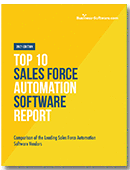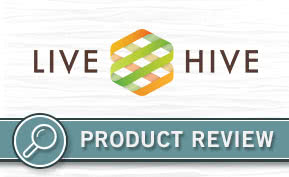Sales Tools
Channel Incentives: 3 Ways to Make Your Finance Team Happy

Channel incentives can be a company’s best friend when managed properly. Companies rely on discounts, rebates, and other pricing-related levers to drive demand for new products, penetrate new market segments, and accelerate growth in specific geographies.
The problem is that different business departments often have starkly different perspectives on channel incentives and their impact on revenue management, supply chain operations, and the overall cost to serve. It’s crucial to align multiple points of view on incentives, working with finance, sales, and supply chains to develop compelling incentives, meet forecast and demand plans, and delight channel partners.
This post, the first in a three-part series, will focus on finance’s perspective on channel incentives and how it can add value to the incentive management process. The rest of the series will dig into the challenges sales teams and supply chains face when confronted with incentives, and how to build better incentive plans with those concerns in mind.
Finance’s Issues With Incentives
Financial executives and controllers understand that incentives are a critical component of selling through numerous, diverse routes to market. However, there are some issues that consistently pique the interest of finance and spur review:
- Incentive design. Incentives are often developed and installed without adequate upfront modeling, making it difficult to define and measure success later.
- Timing. The money for incentives is spent now with the expectation of driving future revenue. This offset in timing requires finance teams to set up and manage accruals to cover the expense. Determining the optimal amount to accrue–be it weekly, monthly, or quarterly–is a major headache.
- Metrics and impact. Senior financial executives routinely have unmet questions regarding channel-related spending, including:
- How much money did we actually spend compared to what we planned to spend on particular partner levels, geographies, product lines, and more?
- What worked and what didn’t in our incentive programs?
- What value did we get for the money we spent?
- Did our channel sales partners perform according to the requirements contained in the agreement?
How to Build Better Channel Incentives
You certainly can’t fault the controllers and finance executives for getting frustrated. Without the right tools and processes, it’s virtually impossible to stay in control of incentive spend. However, there are a number of revenue management tools that can automate or streamline these processes. Using those tools, here are three ways to solve your finance teams’ worries when it comes to channel incentives:
- Define goals and the meaning of success. You can’t manage what you can’t measure, goes the old management adage. Satisfy the finance team’s thirst for measurement by establishing, from day one, the goal, the expected results, and the metrics used to define success for your incentive plan. With deeper insight into which incentives work and which ones don’t, you’ll make finance happy while paving the way for more effective incentives.
- Automate processing. Many organizations rely on spreadsheets and email to determine the optimal amount to accrue or employ them to figure out which of the incoming rebate, discount, and ship-and-debit claims are legitimate. That’s risky, and a clear road to over-payments, missed payment milestones, and significant financial and legal risk. Automating the assessment of accuracy, eligibility, and compliance reduces profit erosion and results in better allocation of scarce resources.
- Monitor analytics. Use established metrics to keep a close eye on which incentives are successful and why. Implementing incentives should be a cycle, not a one-time process, and the only way to continually improve your incentives over time is through deep analytics that pinpoint which agreements create the most value and which ones fall flat.
 Using these tactics, finance teams can shift from reactive to proactive and use channel incentives as a truly strategic means of driving profitable sales growth. With the right information and analytical tools at their fingertips, finance execs can focus more on planning and strategy development. And with the right plans in place, outcomes are more likely to reflect expectations, removing a lot of questions and headaches in the end.
Using these tactics, finance teams can shift from reactive to proactive and use channel incentives as a truly strategic means of driving profitable sales growth. With the right information and analytical tools at their fingertips, finance execs can focus more on planning and strategy development. And with the right plans in place, outcomes are more likely to reflect expectations, removing a lot of questions and headaches in the end.
For more information on supercharging your sales operations be sure to take a look at our Top 10 Sales Force Automation software report as well as our full collection of sales force automation best practices.






